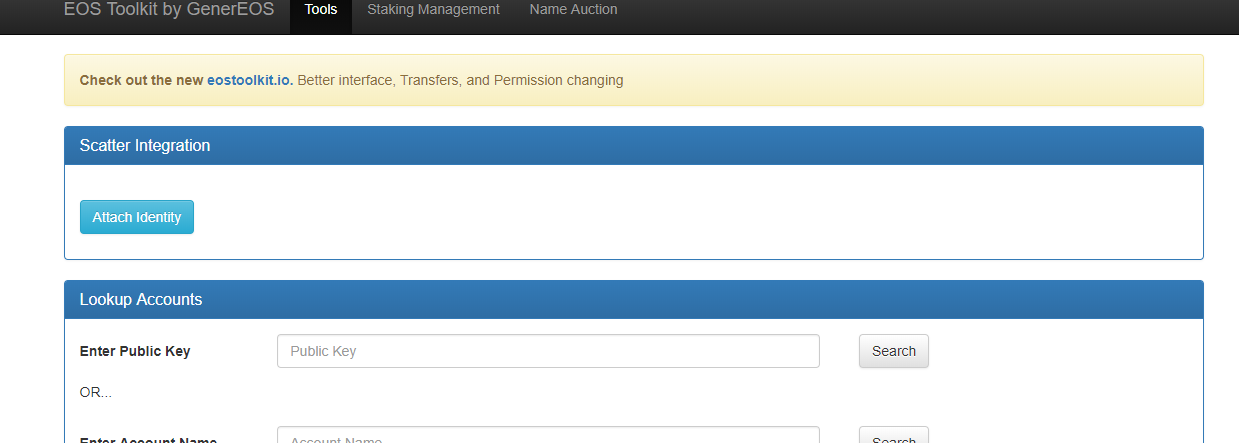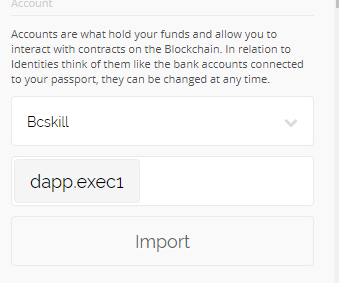本文所有实践都是基于EOS v1.0.1,请切到该分支然后对比源码,切换命令git checkout v1.0.1
提到区块生产和同步,我们肯定有几个疑问?
- 节点同步
- 节点从哪里同步数据,节点如何知道哪些节点有最新的区块数据以同步数据
- genesis文件不同的节点互联会怎么样?
- 节点什么时候同步数据
- 区块生产
节点什么时候生产?节点是一启动就开始生产?还是等同步好了才生产?任何节点都可以生产?
接下来我们就一一解答区块同步数据
节点信息获取
节点要同步数据,必须得知道从哪里节点获取他们的区块信息。这个靠显式声明的种子节点解决,种子节点然后会发回更多节点信息。在config.ini文件里添加如下内容即可添加种子节点,这些种子节点信息一般是EOS链的创建者和运营者管理的,比如jungleTestNet测试网,我们要想加入这个测试网络就需要配置如下信息。
p2p-peer-address = jungle.cryptolions.io:19876 p2p-peer-address = jungle.cryptolions.io:29876 p2p-peer-address = dev.cryptolions.io:39876不同genesis文件的节点互联
首先来说下genesis是什么东西
genesis文件是一个用来描述创世块信息的文件

最重要的是initial_timestamp和initial_key - initial_timestamp跟区块生产相关,后面区块生产分析时会用到这个值
- initial_key是创建这个genesis的公钥,系统将会以这个公钥创建eosio这个系统账号,而系统的智能合约的核心操作都需要系统账号授权,也就是说initial key控制着eosio.system等智能合约。eosio.system智能合约控制整个系统的。比如生产者注册就必须使用eosio.system智能合约。
void initialize_database() { authority system_auth(conf.genesis.initial_key); create_native_account( config::system_account_name, system_auth, system_auth, true ); }不同genesis文件,就代表是不同的链,这样的节点其实是不能互联的。但是由于节点服务器信息(ip, 端口)是公开的,不排除有误加的情况。所以必须有机制拒绝这样的连接,这个是连接握手节点通过检测chain_id来实现的
void net_plugin_impl::handle_message( connection_ptr c, const handshake_message &msg) { if (msg.generation == 1) { //检测是否属于同一个链 if( msg.chain_id != chain_id) { elog( "Peer on a different chain. Closing connection"); c->enqueue( go_away_message(go_away_reason::wrong_chain) ); return; } } }chain_id不一样时,你会发现如下错误输出

那chain_id具体是怎么生成的呢?controller_impl( const controller::config& cfg, controller& s ) :chain_id( cfg.genesis.compute_chain_id() ){ }
chain::chain_id_type genesis_state::compute_chain_id() const {
digest_type::encoder enc;
fc::raw::pack( enc, *this );
return chain_id_type{enc.result()};
}
其实就是将genesis文件的数据做一次类似hash的操作
#####同步时机
新连接建立时握手阶段就会互相检测各自链的状态,并开始同步区块数据
```cpp
void sync_manager::recv_handshake (connection_ptr c, const handshake_message &msg) {
controller& cc = chain_plug->chain();
//本地不可逆区块number
uint32_t lib_num = cc.last_irreversible_block_num( );
//remote peer不可逆区块number
uint32_t peer_lib = msg.last_irreversible_block_num;
reset_lib_num(c);
c->syncing = false;
//接下来就是比较本地区块高度和远端节点区块高度,有如下4情况
//--------------------------------
// sync need checks; (lib == last irreversible block)
//
// 0. my head block id == peer head id means we are all caugnt up block wise
// 1. my head block num < peer lib - start sync locally
// 2. my lib > peer head num - send an last_irr_catch_up notice if not the first generation
//
// 3 my head block num <= peer head block num - update sync state and send a catchup request
// 4 my head block num > peer block num ssend a notice catchup if this is not the first generation
//
//-----------------------------
uint32_t head = cc.head_block_num( );
//本地节点的区块头num小于远端节点不可逆区块头num时,同步
if (head < peer_lib) {
fc_dlog(logger, "sync check state 1");
// wait for receipt of a notice message before initiating sync
if (c->protocol_version < proto_explicit_sync) {
start_sync( c, peer_lib);
}
return;
}
….
}区块生产
一个节点要生成区块,必须满足两个条件
- chain-> _production_enabled==true
_production_enabled=true有几种情况
- config.ini和或者启动时带有enable-stale-production
这里看到enable-stale-production这个参数的作用了吧,它的意思是哪怕本地区块头是过时的区块,也继续生产。那什么情况下需要置位这个参数呢?私有链有其他生产者之前必须赋值这个变量
创世块的时间戳(genesis文件中的initial_timestamp字段)是一个确定的值,节点nodeos第一次启动时当前时间肯定远大于这个创世块的时间戳,因而正常情况下,系统应该已经基于这个创世块生产很多后续区块,因而需要先同步到最新再生产新块的。但是由于这个链是你自己刚建立的,你确定没有其他节点基于你本地的区块(包括创世块)生产了其他区块,因此立即基于当前区块生产的新块是合法的且也是你应该做的。 - 区块同步完成时,这个很好理解,当我们已经同步下来所有区块时,我们自然可以基于最新的区块生产新的区块
void on_incoming_block(const signed_block_ptr& block) { //如果下一个块的截止时间大于当前时间,意味着同步完成 if( chain.head_block_state()->header.timestamp.next().to_time_point() >= fc::time_point::now() ) _production_enabled = true; }
-
节点被投票成了21个代表中的一个,且到了生产区块的turn(21个代表节点是分时生产区块的)
我们知道EOS采用的DPOS+BFT,一个节点要成为真正“生产者”,必须被系统其他节点投票出来成为21个超级节点中的一个。同时,被选择为超级节点后,也是和其他20个节点轮流生产。其实,这里存在一个生产者注册流程,也就说一个节点光配置为producer是不够的,还需要通过eosio.system智能合约注册生产者,这个操作权限只授予给了创世块的initial_key的持有人。producer_plugin_impl::start_block_result producer_plugin_impl::start_block() { chain::controller& chain = app().get_plugin<chain_plugin>().chain(); const auto& hbs = chain.head_block_state(); _pending_block_mode = pending_block_mode::producing; // Not our turn //获取当前生产者 const auto& scheduled_producer = hbs->get_scheduled_producer(block_time); // If the next block production opportunity is in the present or future, we're synced. if( !_production_enabled ) { //还在同步,不能生产 _pending_block_mode = pending_block_mode::speculating; } else if( _producers.find(scheduled_producer.producer_name) == _producers.end()) {//检测当前生产者是否属于本节点的 //不是自己的turn _pending_block_mode = pending_block_mode::speculating; } else if (signature_provider_itr == _signature_providers.end()) { //没有producer的签名,即没有producer的私钥 elog("Not producing block because I don't have the private key for ${scheduled_key}", ("scheduled_key", scheduled_producer.block_signing_key)); _pending_block_mode = pending_block_mode::speculating; } else if ( _pause_production ) { ... } try { uint16_t blocks_to_confirm = 0; chain.abort_block(); //轮到该节点的producer生产了,真正生产区块 chain.start_block(block_time, blocks_to_confirm); } FC_LOG_AND_DROP(); }生产流程图















 进入网络设置
进入网络设置












